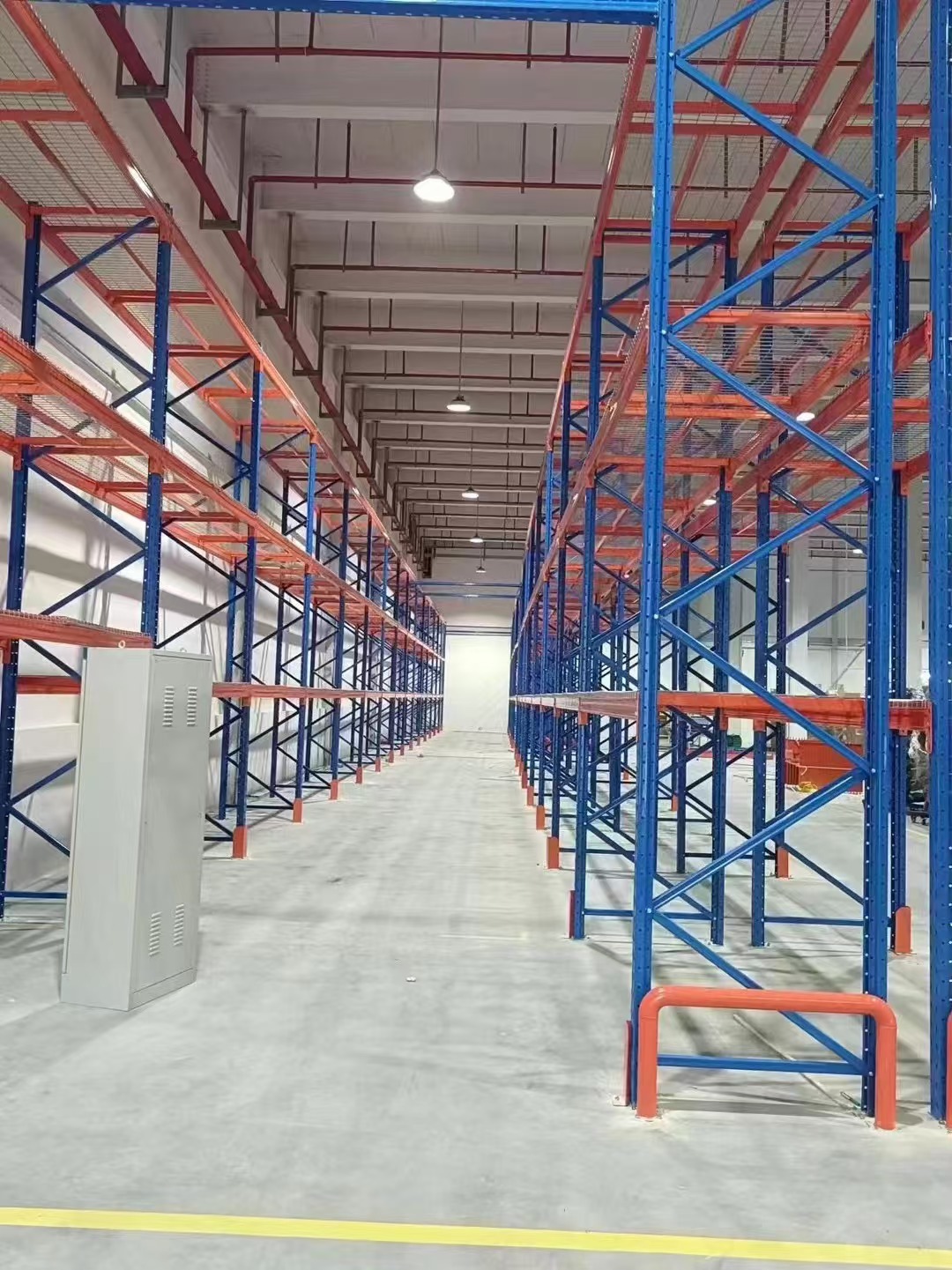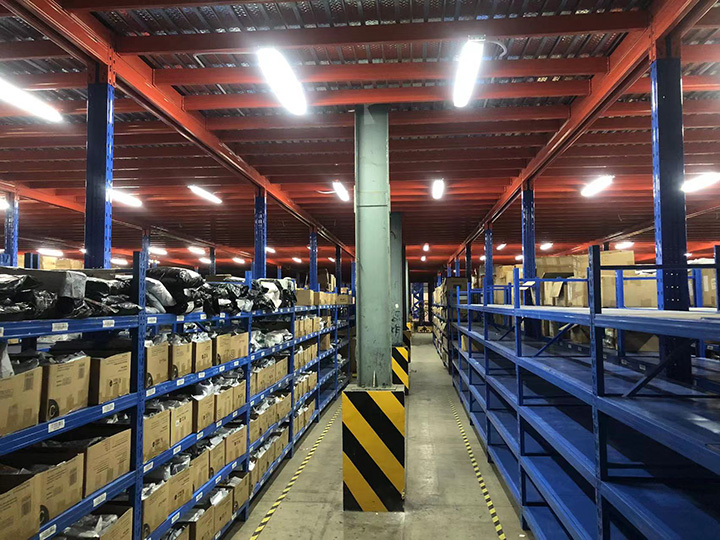In today's fast-paced logistics and supply chain industry, optimizing warehouse space is crucial for maintaining competitiveness and efficiency. The best warehouse racking systems play a pivotal role in this optimization, enabling businesses to maximize storage density, improve inventory management, and enhance overall workflow. Whether you're running a small distribution center or a large-scale fulfillment operation, selecting the right racking system can lead to significant cost savings and productivity gains. This article delves into the essential aspects of the best warehouse racking systems, providing insights to help you make an informed decision. We'll explore various types, key features, selection criteria, benefits, and maintenance tips, all aimed at guiding you toward implementing systems that align with your operational needs. By the end, you'll have a comprehensive understanding of how these systems can transform your warehouse operations.

Warehouse racking systems are structural frameworks designed to store palletized goods and other items in an organized manner. They are the backbone of any storage facility, allowing for vertical and horizontal space utilization. The best warehouse racking systems are engineered to handle heavy loads, withstand environmental stresses, and adapt to changing inventory demands. Historically, racking systems have evolved from simple shelving to sophisticated, automated solutions that integrate with warehouse management software. Their importance cannot be overstated—they reduce clutter, minimize product damage, and facilitate faster order fulfillment. In essence, investing in high-quality racking systems is a strategic move that can lead to long-term operational excellence and scalability.
When it comes to the best warehouse racking systems, variety is key to meeting diverse storage requirements. Here are some of the most popular types:
Selective Pallet Racking: This is one of the most common and versatile systems, allowing direct access to every pallet. It's ideal for warehouses with a wide range of SKUs and high turnover rates. The best warehouse racking systems in this category often feature adjustable beams and upright frames, making them customizable for different load capacities and aisle widths.
Drive-In and Drive-Through Racking: These systems are designed for high-density storage by eliminating aisles and allowing forklifts to drive into the rack structure. Drive-in racking uses a last-in, first-out (LIFO) approach, while drive-through employs first-in, first-out (FIFO). The best warehouse racking systems here maximize cube utilization, perfect for storing large quantities of similar products.
Push-Back Racking: Utilizing a dynamic cart system, push-back racking allows pallets to be stored deeper and retrieved easily. It offers a balance between selectivity and density, making it a top choice for the best warehouse racking systems in environments requiring medium to high throughput.
Cantilever Racking: Ideal for long, bulky items like pipes or lumber, cantilever systems feature arms that extend from vertical columns. The best warehouse racking systems in this niche provide excellent accessibility and flexibility without obstructive front columns.
Mobile Racking: This system incorporates racks mounted on mobile bases that slide along rails, creating adjustable aisles. It's among the best warehouse racking systems for maximizing space in facilities with limited square footage, as it can increase storage density by up to 100% compared to static systems.
Each type has its advantages, and the best warehouse racking systems often combine multiple types to address specific operational challenges, such as seasonal fluctuations or specialized inventory.
Identifying the best warehouse racking systems involves evaluating several critical features that contribute to their performance and durability. Here are the key attributes to look for:
Load Capacity and Strength: The best warehouse racking systems are built to handle specific weight limits without compromising safety. They typically use high-strength steel and are tested for dynamic and static loads. For instance, systems with reinforced beams and seismic-rated designs are essential in earthquake-prone areas.
Durability and Corrosion Resistance: Exposure to moisture, chemicals, and temperature variations can degrade racking systems. The best warehouse racking systems often feature galvanized or powder-coated finishes that protect against rust and wear, extending their lifespan and reducing maintenance costs.
Flexibility and Adjustability: As inventory needs change, the ability to reconfigure racks is crucial. The best warehouse racking systems offer modular designs with easily adjustable components, such as beam levels and frame heights, allowing for quick adaptations without major downtime.
Safety Features: Safety is paramount in warehouse operations. The best warehouse racking systems include integrated safety elements like lock-in beams, protective column guards, and anti-collapse nets. These features help prevent accidents and ensure compliance with occupational safety standards.
Integration with Technology: Modern racking systems often incorporate technology for enhanced efficiency. The best warehouse racking systems may support RFID tagging, barcode scanning, or automation interfaces, enabling real-time inventory tracking and seamless integration with warehouse management systems.
By prioritizing these features, businesses can select the best warehouse racking systems that not only meet current demands but also future-proof their operations.

Selecting the best warehouse racking systems requires a thorough assessment of various factors to ensure alignment with your business goals. Here's a detailed look at what to consider:
Inventory Characteristics: The type, size, and weight of your products directly influence the choice of racking. For example, perishable goods might require systems with better airflow, while fragile items need racks with cushioning features. The best warehouse racking systems are tailored to handle specific inventory profiles, minimizing damage and optimizing storage.
Warehouse Layout and Space Utilization: Evaluate your facility's dimensions, including ceiling height, floor space, and aisle requirements. The best warehouse racking systems should maximize vertical storage while maintaining efficient traffic flow for equipment like forklifts. Tools like 3D modeling can help visualize how different systems fit into your space.
Budget and ROI: While initial costs are important, consider the long-term return on investment. The best warehouse racking systems may have higher upfront expenses but offer savings through reduced labor, lower maintenance, and increased storage capacity. Calculate total cost of ownership, including installation, repairs, and potential expansions.
Operational Workflow: Your picking, packing, and shipping processes should integrate smoothly with the racking system. The best warehouse racking systems support workflows by enabling fast access, reducing travel time, and minimizing errors. For instance, systems with narrow aisles can speed up order fulfillment in high-volume environments.
Scalability and Future Needs: As your business grows, your storage system must adapt. The best warehouse racking systems are scalable, allowing for easy expansions or reconfigurations. Consider systems that can accommodate new technologies or increased inventory volumes without significant overhauls.
By carefully analyzing these factors, you can identify the best warehouse racking systems that deliver optimal performance and efficiency for your specific context.
Investing in the best warehouse racking systems yields numerous benefits that extend beyond mere storage. Here are some of the most impactful advantages:
Increased Storage Density: By utilizing vertical space effectively, the best warehouse racking systems can double or triple storage capacity without expanding the physical footprint. This is especially valuable in urban areas where real estate costs are high.
Enhanced Productivity and Efficiency: Organized storage reduces the time workers spend searching for items, leading to faster order processing. The best warehouse racking systems streamline operations by minimizing clutter and enabling logical inventory placement, which boosts overall throughput.
Improved Safety and Compliance: Well-designed racking systems reduce the risk of accidents, such as collapses or forklift collisions. The best warehouse racking systems adhere to industry standards like OSHA or RMI, ensuring a safer work environment and lowering insurance premiums.
Cost Savings: Through better space utilization and reduced product damage, the best warehouse racking systems contribute to lower operational costs. They also minimize the need for frequent replacements due to their durability, providing long-term financial benefits.
Sustainability and Environmental Impact: Many of the best warehouse racking systems are made from recyclable materials and designed for energy efficiency, such as by reducing lighting needs in optimized aisles. This supports corporate sustainability goals and can enhance brand reputation.
Overall, the best warehouse racking systems transform warehouses into dynamic, efficient hubs that support business growth and resilience.
Proper installation and maintenance are critical to maximizing the lifespan and performance of the best warehouse racking systems. Here's a guide to ensure optimal use:
Professional Installation: Always hire certified installers for the best warehouse racking systems to ensure structural integrity and safety. They follow manufacturer guidelines and local codes, reducing the risk of errors that could lead to failures. During installation, consider factors like floor condition and anchor bolt specifications.
Routine Inspections and Maintenance: Schedule regular checks for signs of damage, such as bent beams or loose connections. The best warehouse racking systems should be inspected at least annually, or after any impact incident. Use checklist tools to document issues and prioritize repairs.
Load Management and Training: Educate staff on proper loading techniques to avoid overloading or uneven weight distribution. The best warehouse racking systems come with clear load capacity labels; enforce compliance through training programs to prevent accidents and maintain system integrity.
Cleaning and Upkeep: Keep racks clean from dust, debris, and spills that could cause corrosion or slippage. The best warehouse racking systems often have smooth surfaces for easy cleaning, but regular wiping and inspections for environmental damage are essential.
Upgrades and Retrofits: As technology advances, consider upgrading components of the best warehouse racking systems to incorporate new features, such as automated retrieval systems or enhanced safety devices. This extends usability and keeps your warehouse competitive.
By adhering to these practices, you can ensure that the best warehouse racking systems continue to perform reliably and safely over time.
Understanding the financial aspects of the best warehouse racking systems is essential for budgeting and planning. Costs can vary widely based on type, material, and customization:
Initial Purchase and Installation: The best warehouse racking systems typically range from $50 to $200 per pallet position, depending on complexity. For example, selective racking might cost less than automated systems, but drive-in racking could be more expensive due to its density benefits. Installation adds 10-30% to the total cost, including labor and equipment.
Long-Term Operational Costs: Factor in expenses like maintenance, repairs, and potential expansions. The best warehouse racking systems often have lower long-term costs due to their durability and efficiency. For instance, systems with corrosion-resistant coatings reduce replacement frequency, saving money over years.
ROI Calculation: To evaluate the best warehouse racking systems, calculate ROI by comparing initial investment against gains in storage capacity, productivity, and reduced losses. A typical payback period can be 1-3 years, making it a worthwhile investment for most businesses.
Financing Options: Many suppliers offer leasing or financing for the best warehouse racking systems, spreading costs over time. This can make high-end systems more accessible without straining cash flow.
In summary, while the best warehouse racking systems require upfront investment, their long-term benefits in efficiency and cost savings make them a smart choice for any warehouse operation.
Q1: What are the most common types of best warehouse racking systems?
A1: The most common types include selective pallet racking, drive-in racking, push-back racking, cantilever racking, and mobile racking. Each is designed for specific storage needs, such as high-density or selective access, and the best warehouse racking systems often combine these types to optimize space and efficiency.
Q2: How do I determine the best warehouse racking system for my business?
A2: Start by assessing your inventory type, warehouse layout, budget, and operational workflow. Consider factors like load capacity, scalability, and safety features. Consulting with a professional can help you identify the best warehouse racking systems tailored to your unique requirements.
Q3: What is the average lifespan of best warehouse racking systems?
A3: With proper maintenance, the best warehouse racking systems can last 20 years or more. Durability depends on material quality, environmental conditions, and usage intensity. Regular inspections and timely repairs are key to extending their lifespan.
Q4: Are best warehouse racking systems customizable?
A4: Yes, many of the best warehouse racking systems offer customization options, such as adjustable beam heights, color coatings, and integration with automation technologies. This allows them to fit specific warehouse dimensions and operational needs seamlessly.
Q5: How often should best warehouse racking systems be inspected for safety?
A5: It's recommended to inspect the best warehouse racking systems at least annually, or more frequently in high-traffic environments. Additionally, conduct inspections after any impact event or significant changes in load patterns to ensure ongoing safety and compliance with standards.
By addressing these aspects, you can make an informed decision on implementing the best warehouse racking systems that will enhance your storage capabilities and drive business success.
 Wechat
Wechat
 Whatsapp
Whatsapp